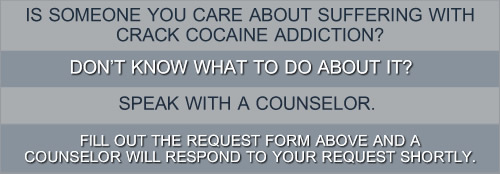
Crack Cocaine: Quick Facts
Crack cocaine is a drug which is produced by taking cocaine powder, dissolving it in baking soda and then boiling it. This produces little tan rocks that are up to half a gram in weight.
Crack cocaine is a much cheaper drug than cocaine because the cocaine is dissolved and effectively multiplied. This makes it a much more accessible drug in urban areas and for users that might not be on a high income, whereas cocaine traditionally is a drug used by the rich and powerful.
Crack cocaine is smoked from a glass bowl most of the time. However, crack cocaine can be injected intravenously. The difference in the drug reaching the bloodstream is basically negligible, but when tolerance and dependence have developed users may opt for this.
After crack goes into the bloodstream, it gets attached to dopamine transmitters in the brain. This causes a huge surge of euphoria and feelings of pleasure in general in the brain as soon as the user smokes or injects crack cocaine.
The intense high that an user feels straight after consuming crack cocaine can last up to fifteen minutes and for as little as five minutes. This causes many users to take another dose to feel the intense pleasurable feeling again.
When someone has used crack cocaine there are some telltale signs. An individual that has consumed crack cocaine will have glazed over eyes and enlarged pupils.
Other signs of crack cocaine use and abuse are inexplicable and drastic weight loss, unexplainable and very heavy sweating, a general disregard for personal hygiene, erratic appetite in which the user might not eat for days and then start to binge and noticeable mood swings.
Crack cocaine is not scientifically proven to be more addictive than cocaine. Cocaine is one of the most psychologically addictive drugs in the world, however, and combined with the societal issues that come along with an easily accessible drug like crack, it can be hypothesized that overall crack cocaine might be more addictive than cocaine. However, it must be emphasized that both drugs are very addictive.
Crack cocaine users can build up a tolerance for the drug very quickly. This means that users need to take more of the drug to achieve the same feeling that they originally did. Basically, users may need to consume more crack cocaine and they might not feel 'normal' without it. This can cause the user a lot of problems.
While the user is not taking crack cocaine, he or she may appear to be disgruntled, unsettled and paranoid. The user might feel intense anxiousness. The user might turn back to crack cocaine to deal with these unpleasant withdrawal effects.
Other signs of crack cocaine addiction include an entirely differently group of peers, a strange and sudden need for money in which the user might steal and pawn off items as well as having difficulty managing his or her finances and starting to become more reclusive. The user might also stop going to work or school after starting to under-perform.
- Questions?
